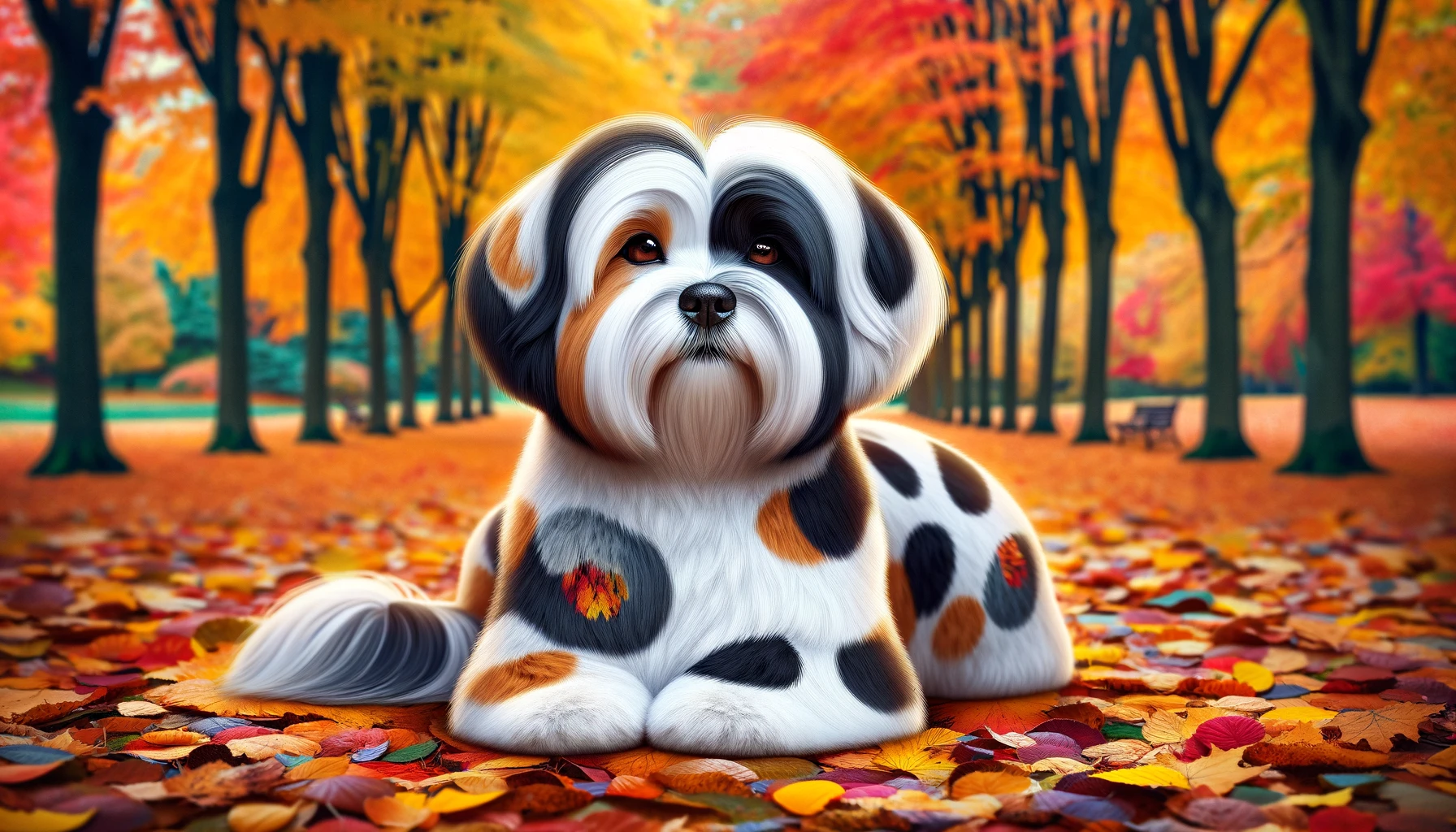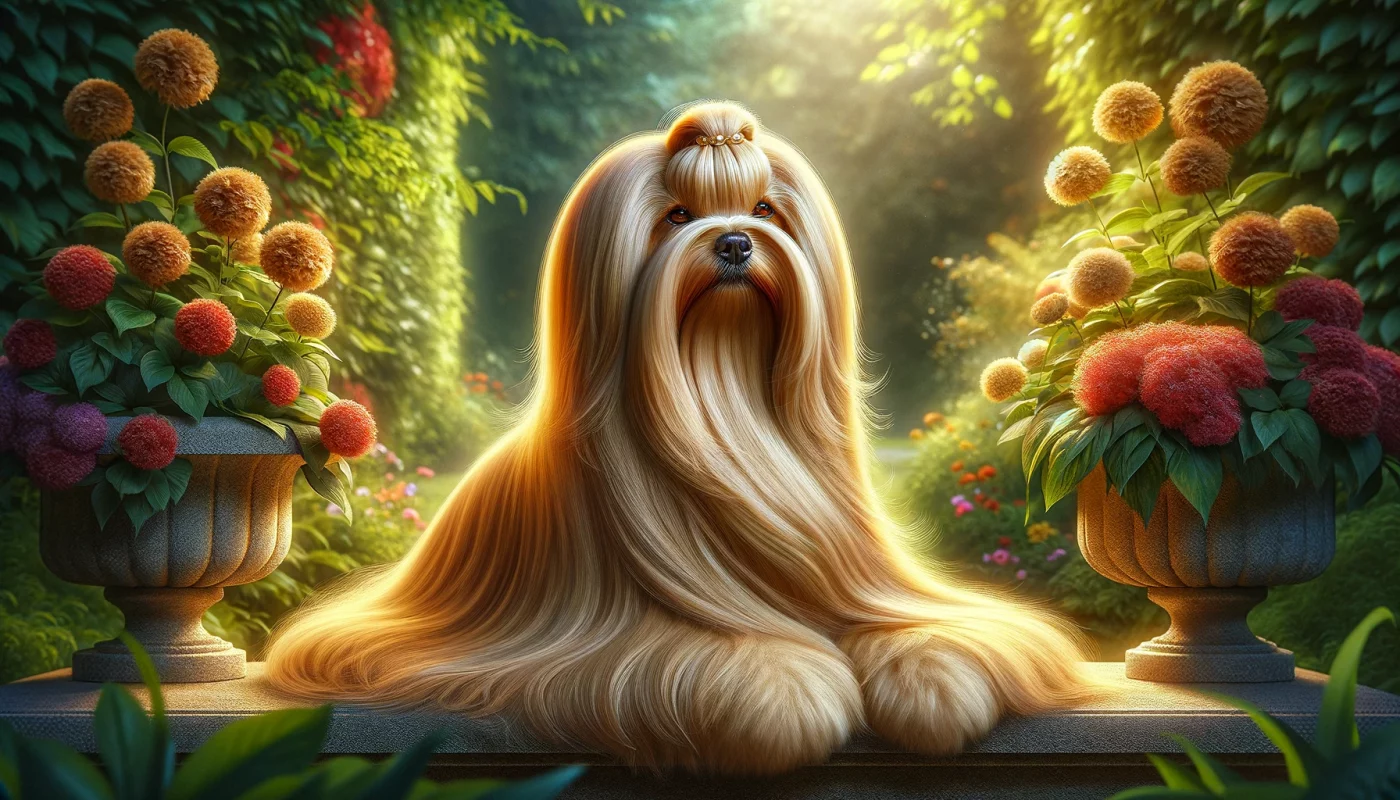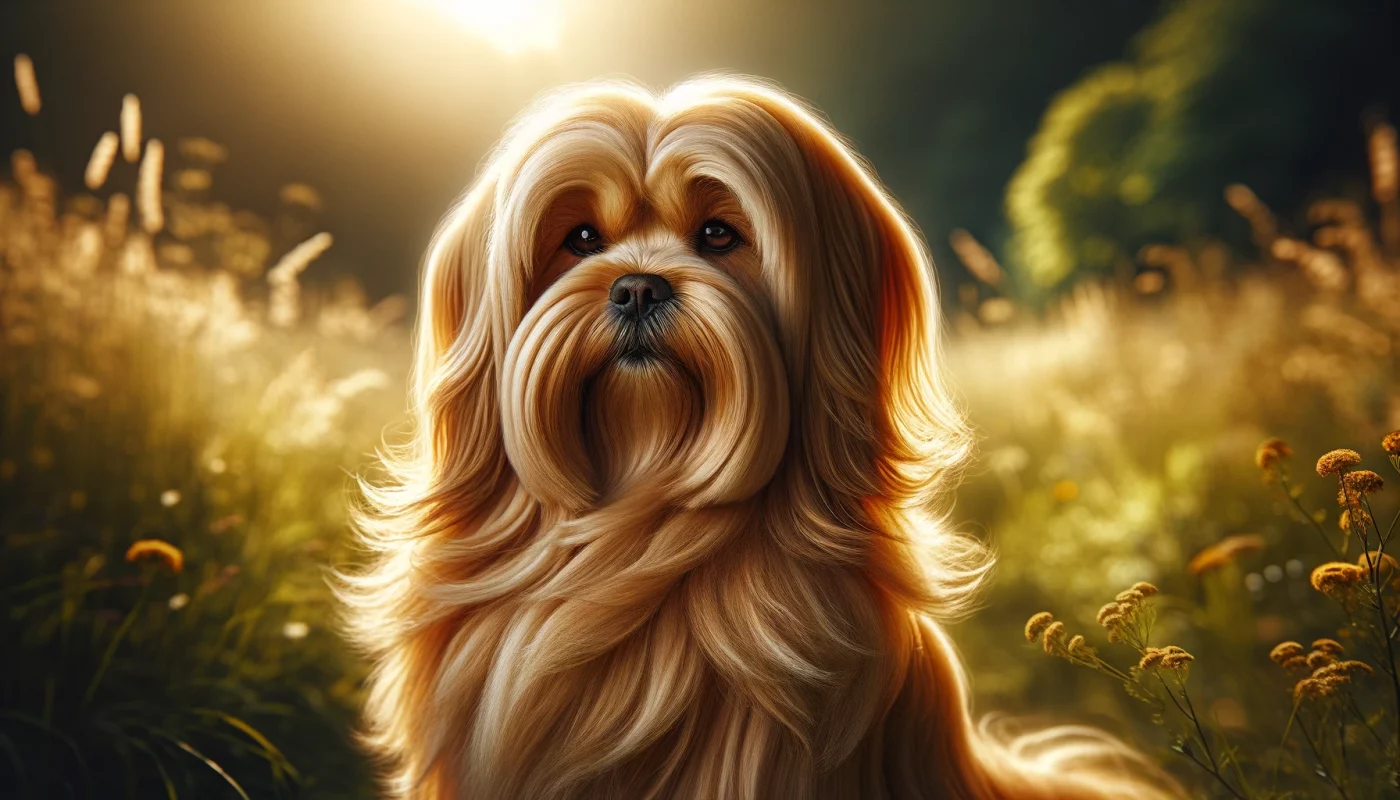
Lhasa Apsos, a breed steeped in mystery and history, originate from the Himalayan mountains of Tibet, serving as sentinel dogs at palaces and monasteries isolated high above the clouds. Renowned for their flowing, floor-length coat, the Lhasa Apso presents an impressive array of colors that complement their noble and watchful demeanor. These colors not only enhance their aesthetic appeal but also add to the breed’s allure, making them a favorite among dog enthusiasts who appreciate both beauty and unique personality. This article explores seven stunning color variations of the Lhasa Apso, each bringing a different aspect of this ancient breed to light.
1. Gold

The gold Lhasa Apso shines like the sun with a coat that can range from pale cream to a deep, rich gold. This color is highly reflective, shimmering in natural light, which highlights their expressive, dark eyes and provides a striking contrast to their often black facial features. Owners of gold Lhasa Apsos might find that this color not only captures the attention of passersby but also embodies the warmth and dignified strength that the breed is known for. This color variation is particularly prone to sun bleaching, which can add unique highlights after prolonged exposure to the sun.
2. Honey

Honey-colored Lhasa Apsos possess a warm, light brown coat with hints of golden yellow that glows in any light setting. This color is less common and gives the Lhasa Apso a soft, approachable look while maintaining the breed’s typical regal bearing. The honey tones accentuate the depth of their coat, giving it a lush, multi-dimensional appearance. This variant tends to look excellent in both short and long coats, showcasing their versatility and adaptability in various grooming styles.
3. Slate

Slate Lhasa Apsos are a testament to the breed’s ability to display cooler tones, featuring a grayish coat that can range from silver to a dark, slate gray. This coloration provides a sophisticated look that suits the Lhasa Apso’s calm and composed temperament. Slate coats can sometimes appear almost mystical, especially when accompanied by the breed’s traditional long, flowing coat that sweeps gracefully with each movement.
4. Black

A black Lhasa Apso is both striking and elegant, with a sleek coat that absorbs light, giving them a unique, illustrious appearance. This color enhances their mysterious origins and spiritual background, often making them look like little shadowy figures with bright, attentive eyes. The depth of the black coat can make their grooming needs more apparent, as dandruff and dust show up more clearly, necessitating regular care.
5. Parti-Color

Parti-color Lhasa Apsos are those with coats of two or more colors, where the secondary color covers at least 20% of their body. These dogs often have patches of white combined with another solid color like black, gold, or slate. The contrast in colors highlights the playful side of the Lhasa Apso’s personality, making each parti-color Lhasa uniquely charming and instantly recognizable.
6. White

White Lhasa Apsos are rare and revered, embodying purity and the classic beauty of the breed. Their snow-white coat requires meticulous grooming to maintain its pristine condition, reflecting the care and devotion of their owners. A white Lhasa Apso can have a regal presence, with a stark white coat providing a perfect backdrop for their wise, expressive eyes and lending an air of serene dignity to their demeanor.
7. Red

Red Lhasa Apsos boast a vibrant, richly pigmented coat that can range from a light cinnamon to a deep mahogany. This color is quite striking and less common, often turning heads and drawing attention to the breed’s luxurious coat and perceptive gaze. The fiery shade of red highlights their Tibetan heritage and spiritual significance, associating them with the monks and palaces where they were once revered as guardians.
In conclusion, the Lhasa Apso’s range of colors not only enhances their aesthetic appeal but also contributes to their mystique and the enduring fascination with the breed. From the reflective golds to the deep, absorbing blacks, each color brings out a different facet of the Lhasa Apso’s personality, making them a versatile and captivating companion. Whether draped in the regal tones of red or the earthy hues of slate, each Lhasa Apso color variation is a sight to behold, embodying the breed’s rich history and spiritual background.
Frequently Asked Questions About Lhasa Apso Colors
1. What are the most common colors for Lhasa Apsos?
The most common colors for Lhasa Apsos include gold, honey, and black. Gold Lhasa Apsos typically exhibit a bright, shiny coat that can range from light gold to a deeper shade. Honey-colored Lhasa Apsos have a lighter, more subdued tone that blends gold and light brown, giving them a warm appearance. Black Lhasa Apsos are less common but highly sought after for their striking, deep black coats that highlight the breed’s expressive features.
2. Can Lhasa Apsos be pure white?
Yes, Lhasa Apsos can be pure white, although this is quite rare. White Lhasa Apsos require meticulous grooming to maintain the pristine appearance of their coats. The white coat can make the typical features of the breed—such as their dark eyes and nose—stand out dramatically, providing a striking contrast that is both beautiful and elegant.
3. Are there any brindle Lhasa Apsos?
Brindle Lhasa Apsos are extremely rare. Brindle is not a standard color for the breed and is not recognized by major kennel clubs for show purposes. However, some Lhasa Apsos may exhibit brindle-like patterns, usually due to mixed ancestry. These dogs still retain the breed’s characteristic personality and coat type but have a unique color pattern that makes them stand out.
4. What is the rarest color of Lhasa Apsos?
One of the rarest colors for a Lhasa Apso is slate. This cool-toned color ranges from light silvery shades to dark slate gray. Slate Lhasa Apsos are not only rare but also highly prized for their unique and sophisticated appearance that enhances their noble demeanor.
5. How does the color of a Lhasa Apso affect its grooming needs?
The color of a Lhasa Apso does not inherently affect its grooming needs, as all Lhasa Apsos require extensive grooming due to their long, dense coats. However, lighter colors like white or cream may show dirt and staining more readily than darker colors, potentially requiring more frequent bathing and grooming to keep the coat looking clean and vibrant.
6. Do Lhasa Apsos’ colors change as they age?
Yes, the colors of Lhasa Apsos can change as they age. Puppies often darken as they grow older, especially those born with lighter colors such as gold or cream. Additionally, some Lhasa Apsos may experience graying as they reach senior years, especially around the face and muzzle.
7. Can Lhasa Apsos have patterns in their coats?
Yes, Lhasa Apsos can have patterns in their coats, most commonly seen in parti-color variations. Parti-colored Lhasa Apsos have coats with significant patches of white combined with another color. These patterns can vary widely, making each parti-colored Lhasa Apso unique in appearance.
8. What color are Lhasa Apso puppies when they are born?
Lhasa Apso puppies can be born with a variety of coat colors, which may change as they mature. It is not uncommon for Lhasa Apso puppies to be born darker and lighten as their adult coat develops. The final adult color can often be predicted by looking at the color of the tips of their ears.
9. Are certain Lhasa Apso colors associated with specific health issues?
There is no scientific evidence linking specific Lhasa Apso colors to health issues. Health concerns in Lhasa Apsos are typically related to genetics and are not color-specific. Breeders should focus on health screenings and responsible breeding practices rather than coat color to ensure healthy offspring.
10. What determines the coat color of a Lhasa Apso?
The coat color of a Lhasa Apso is determined by genetics. The interaction of multiple genes inherited from the puppy’s parents dictates the coat color. Some colors, such as black, are dominant, while others, like the rare slate, may be recessive and require specific combinations of genes from both parents to appear.
Discover more from reviewer4you.com
Subscribe to get the latest posts to your email.





